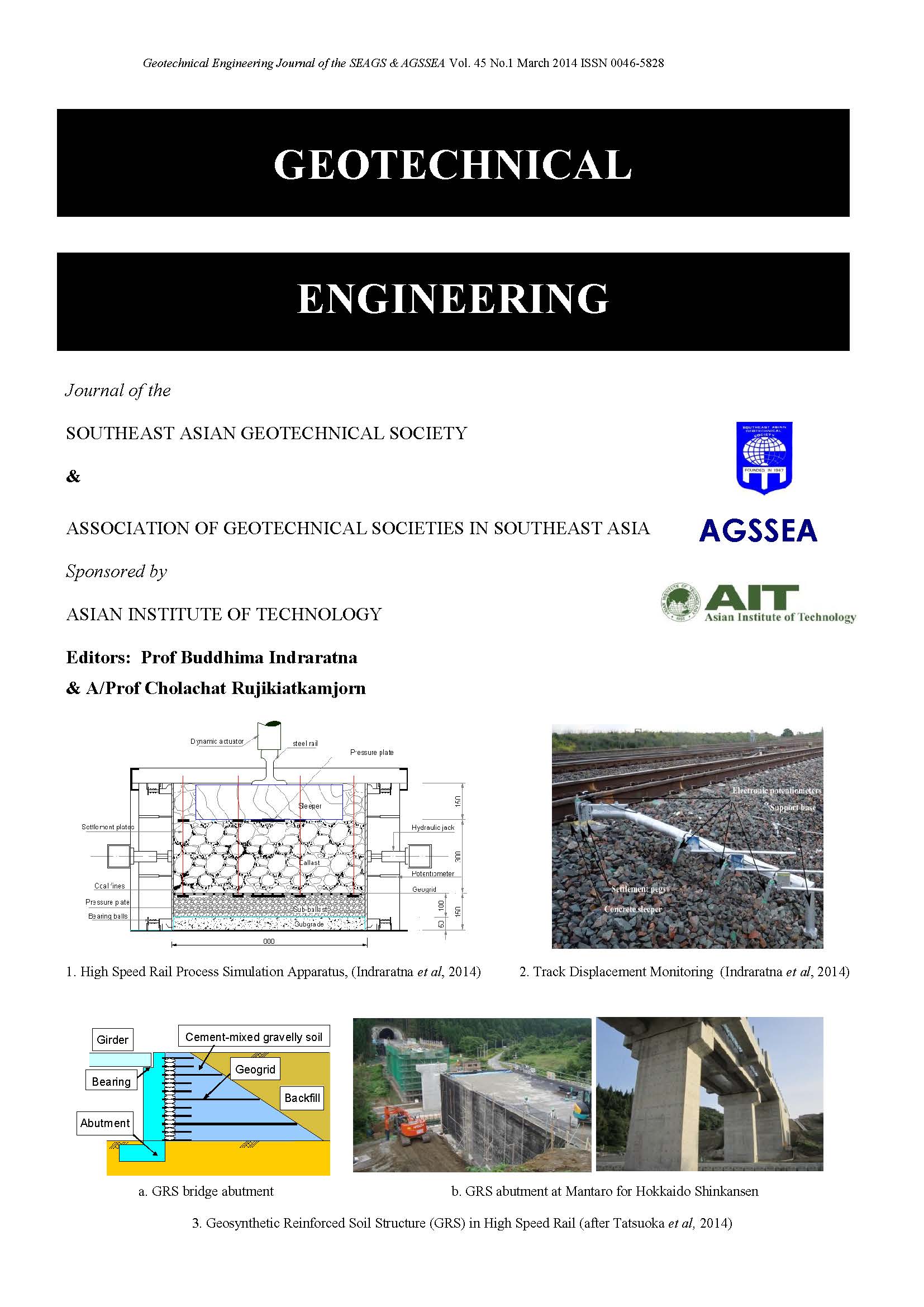Mechanical Properties of Polyurethane-Stabilized Ballast
Main Article Content
Abstract
Ever increasing volume, tonnage, and speeds on rail systems are stressing rail substructure to levels never before evaluated or considered in depth. To improve maintenance techniques for problematic railway elements (e.g., bolted rail joints, intersections, bridge approaches), an in situ method involving ballast layer reinforcement with polyurethane is proposed. Ballast is a crucial material for structural support of the rail tracks. The structural integrity of highly fouled ballast (i.e., containing fine particles) can be compromised leading to track instability and ultimately train derailments. An application using polyurethane void filling and particle bonding technology has been developed and has the potential to mitigate impacts of ballast fouling, enhance rail freight capacity, and improve track-substructure maintenance efficiency. The purpose of this paper is to present the mechanical properties of Polyurethane-Stabilized Ballast (PSB) (e.g., compressive and flexural response), compare these properties to other materials commonly used in transportation infrastructure (e.g., natural aggregates, cement-stabilized soil), and address the suitability and compliance of PSB for use in track infrastructure. PSB has mechanical properties similar to cement-stabilized soil (i.e., displays flexural strength), but has much greater compressive strength than ballast, which is critical for stabilization of track substructure. Ease of injection and the negligible curing period for PSB makes it an attractive option for railway maintenance, especially for time-sensitive maintenance activities, such as intersections and bridge approaches.
Article Details

This work is licensed under a Creative Commons Attribution-NonCommercial-NoDerivatives 4.0 International License.
Copyright © 2019 Association of Geotechnical Societies in Southeast Asia (AGSSEA) - Southeast Asian Geotechnical Society (SEAGS).


